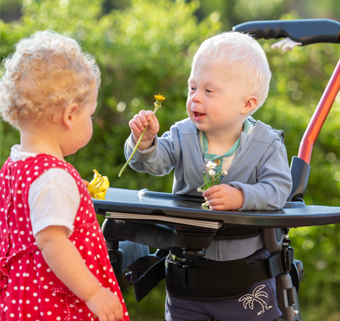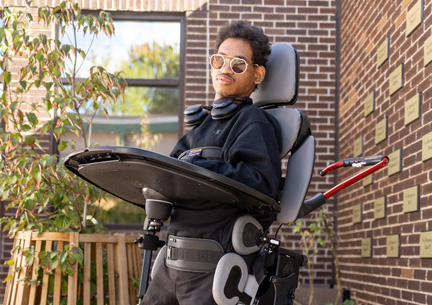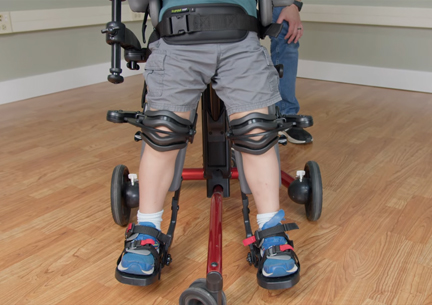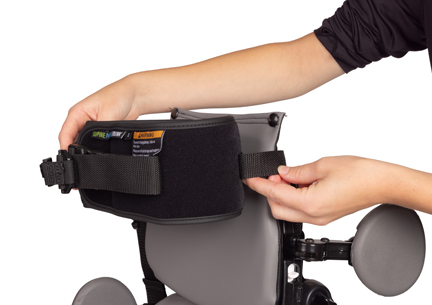Solutions from the Field: Increasing Abduction Range on the Small Prone Stander
| November 2016Supported standing for children with disabilities has many health benefits, among them maintaining hip integrity for the prevention of hip dislocations. To achieve optimal hip stability through adapted standing routines, lower extremity abduction is important. A recent literature review indicated that standing to improve hip  stability should be in 30 to 60 degrees abduction for 60 minutes daily (Paleg, 2013). Another study showed that
standing in 30 degrees hip abduction for 70-90 minutes daily maintained range of motion of the hip, contributing to improved walking and balance (Macias-Merlo, 2015).
stability should be in 30 to 60 degrees abduction for 60 minutes daily (Paleg, 2013). Another study showed that
standing in 30 degrees hip abduction for 70-90 minutes daily maintained range of motion of the hip, contributing to improved walking and balance (Macias-Merlo, 2015).
Here is an ingenious solution for creating increased abduction on the small Rifton Prone Stander from Laura Money, a school-based therapist in Maryland: Attach a medium sized footboard (from the medium Prone Stander) onto the small Prone Stander. With the foot sandals positioned at the edges, this gives more than 30 degrees abduction. Hint: Foot sandals may be rotated to achieve external rotation as well.
Bonus Prone Stander Transfer Hack
For an easier transfer into Rifton’s prone standers, put the foot sandals on backwards so the heel cup blocks are in front of the toes. No heel cup in the back makes it easier to get the child in and out of the stander.
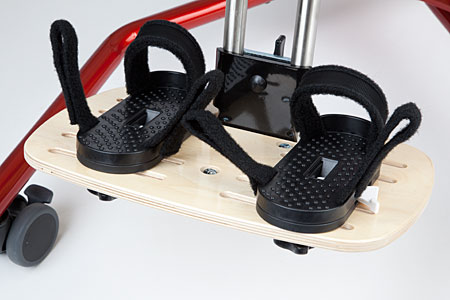
References:
Paleg G, Smith B, Glickman L. Systematic review and evidence-based clinical recommendations for dosing of pediatric supported standing programs. Pediatr Phys Ther. 2013;25(3):232-47.
Macias-Merlo L, Bagur-Calafat C, Girabent-Farres M, Stuberg W. Standing programs to promote hip flexibility in children with spastic diplegic cerebral palsy. Pediatr Phys Ther. 2015;27:243-49.
